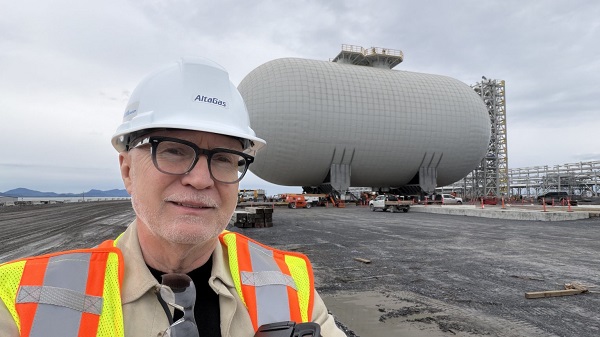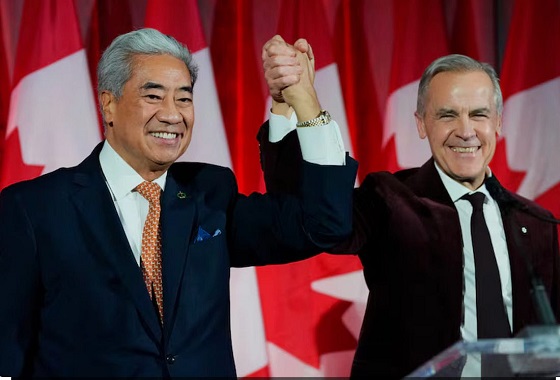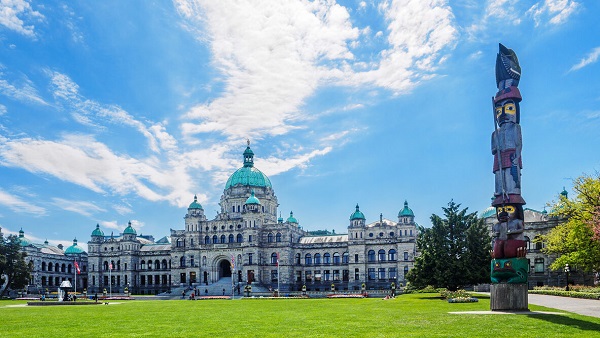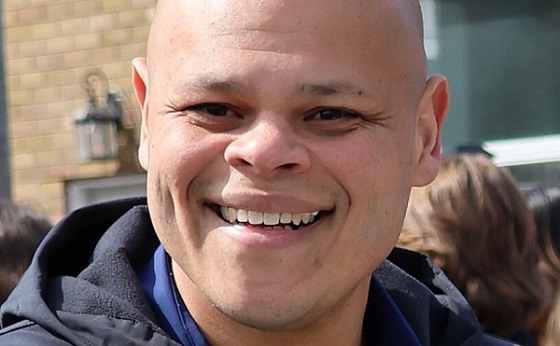MacDonald Laurier Institute
Bureaucrats should not be arbiters of our online world

From the Macdonald Laurier Institute
By Leonid Sirota and Mark Mancini
When it comes to regulating the internet, Ottawa tells Canadians to simply “trust the experts.”
The federal government has pursued a far-reaching internet regulation agenda. This includes the Online Streaming Act (previously known as Bill C-11) and the Online News Act (previously known as Bill C-18). Both are ostensibly designed to force foreign online platforms – streaming ones such as Netflix, Disney+, and YouTube in the former case, Google and Facebook in the latter – to provide support, mainly but not exclusively financial, to Canadian cultural and journalistic producers. The most recent addition to this regulatory programme, Bill C-63, partly targets online platforms too, but its reach is broader. It seeks to prevent a range of “online harms” – from the distribution of child pornography to hate speech.
These legislative endeavours have attracted commentary from all corners, not least from Macdonald-Laurier Institute experts. Much of the discussion has been critical of the government’s policies on the ground of their unwisdom, immorality, and possible unconstitutionality.
But we would like to take a different tack here and focus not on the ends pursued but the means employed by C-11, C-18, and C-63: the empowerment of administrative agencies as rule-makers and arbiters of Canadians’ online world. While they purport to regulate new technologies, business models, and cultural forms, these policies are a throwback to an old philosophy of government that subverts fundamental constitutional principles: democracy, the separation of powers, and the rule of law.
It is worth beginning with a brief restatement of what these principles mean. Democracy means the exercise of political power – law-making, in particular – by either the people themselves or, more commonly, through elected representatives. The separation of powers means that the making and execution of laws are different functions, not to be confused or conflated, and that adjudication of disputes in accordance with the law is a separate function still. The rule of law is a complex idea, but perhaps the pithiest formulation of its core meaning belongs to economist and political philosopher F.A. Hayek: it “means that government in all its actions is bound by rules … which make it possible to foresee how the authority will use its coercive powers in given circumstances.”
Contrast this with the philosophy underpinning the government’s approach to internet regulation. This philosophy permeated the report of a panel commissioned by the federal government at the end of the last decade to propose reforms to Canada’s regulation of the internet. Published in January 2020, “Canada’s Communications Future: Time to Act” called for legislation that would “provide sufficient guidance to assist the [Canadian Radio-Telecommunications Commission (CRTC)] in the discharge of its duties, but sufficient flexibility for it to operate independently in deciding how to implement sector policy. To achieve this, legislative statements of policy should set out broadly framed objectives and should not be overly prescriptive.” Translation: the democratically elected Parliament should not bother with making actual rules; that would be the job of the bureaucrats at the CRTC. They know better – both what the rules should be and how to apply them. Parliament is their enabler, not their master, and the courts should defer to their judgments.
In fairness, the legislation ultimately enacted or considered by Parliament does not go quite as far in empowering the CRTC or a new Digital Safety Commission (DSC) at the expense of Parliament as that report had urged. But it does go far. Probably the most important example of this concerns the amenability of user content – the average TikTok video, rather than Netflix – to CRTC regulation. This was one of the major points of contention when Bill C-11 was before Parliament. The Bill itself – despite claims by the government to the contrary – quite clearly permitted the CRTC to regulate user content, though it did not require it to do so. Amendments to remove this discretionary power were roundly rejected at the government’s insistence, in favour of leaving the user content question open for decision by the CRTC – only for the government to issue a Policy Direction to the CRTC “not to impose regulatory requirements” on user content.
The real scope of the law, and hence the degree of its impact on the freedom of expression of ordinary Canadians, will thus be fleshed out through the interplay of policy directions from Cabinet and CRTC consultations and orders. The same goes for various other aspects of the Online Streaming Act, such as Canadian content and discoverability requirements to be imposed on online platforms. The Online News Act, had it functioned as intended, would similarly have given the CRTC the final say over the extent of the obligations of the platforms subject to it. (In reality, one of these two platforms instead banned the publication of news content, and to avoid the other doing the same thing, the government made a deal with it that eviscerated the act.) And under Bill C-63, the decisions as to whether an online platform’s policies are “adequate to mitigate the risk that users … will be exposed to harmful content” is similarly within the remit of the DSC, with little if any guidance from Parliament as to what is in fact required.
This way of doing things undermines parliamentary democracy as anyone, except some scholars of administrative law would understand it. The people elected to make laws do not, in fact, make them in any meaningful way. On the contrary, they pawn off responsibility for contentious policy choices to administrators; they enact no more than empty shells, politely described as “framework legislation,” full of blanks to be filled out later. This transgression against constitutional principle is compounded when Cabinet makes a mockery of the parliamentary process with its policy flip-flops, which can then be reversed by further Cabinet fiat. The excuse typically given for this dereliction of duty is that the problems to be addressed are too complex for parliamentarians to deal with, which only makes one wonder at their nerve to have put themselves forward to do a job they are concededly unqualified for in the first place.
Enthusiasts for the internet agenda may say that it remedies its democratic deficiencies by consulting with those subject to new registration requirements. Yet CRTC consultations on the Online Streaming Act provided no more than a shabby ersatz of what democracy is supposed to mean – debate and discussion in Parliament. The submission period was short, and “industry-focused.” The CRTC ended up issuing orders requiring registration on a range of internet services that meet a $10 million revenue threshold, and the government issued a policy direction to the CRTC instructing that user content not be regulated. The CRTC’s regulatory plan for the Online Streaming Act is still being developed, and will likely involve further decisions about the reach of registration requirements. Whether the DSC does any better – if and when it implements Bill C-63 – remains to be seen. But, in any case, consultations that only include industry players, or some nominal number of users, cannot replicate an engaged and informed Parliament that weighs competing interests. Nor can it replace an engaged and informed citizenry, holding politicians to account for their choices at the ballot box.
Separation of powers fares no better. Instead of Parliament making laws, independent prosecutors bringing charges, and independent courts ruling on them, the CRTC and DSC combine their broad rule-making powers with the ability to both jawbone and outright prosecute online platforms, and to rule on the charges. The Canadian Civil Liberties Association rightly laments “the vast authority bestowed upon” the DSC “to interpret the law, make up new rules, enforce them, and then serve as judge, jury, and executioner.”
Here again, proponents of administrative power think they have an answer. Instead of the old-fashioned institutions wielding divided powers, they say the modern world requires the government’s full authority to be concentrated in the hands of experts. Agencies like the CRTC and, presumably, the DSC have the skills and wisdom to deal with the complex and increasingly difficult online environment. This claim is attractive in part because the layman often cannot comprehend the size and scale of challenges that modern regulation confronts, while politicians are all too often happy to demonstrate their unseriousness and ignorance.
But, in addition to its other problems, the vision of expert administrators who know better is simply unwarranted by the facts. For example, Konrad von Finckenstein, former chair of the CRTC, has told a Senate committee studying Bill C-11 that the CRTC simply does not normally deal with matters of this nature; and that the CRTC will likely need to hire contractors to fulfil its mandate under the legislation. The CRTC is also, by its own admission, not really up to speed when it comes to the universe of online media it is required to regulate under the Online Streaming Act: it has invoked the need to gather information about podcasting to justify its far-reaching registration requirements for platforms that host them. As for the DSC, it will of course be an entirely new bureaucratic structure with no existing expertise at all. Perhaps the government will appoint experts to it. But it doesn’t have to. Bill C-63 imposes no requirements as to the qualifications of the DSC’s members other than their being Canadian citizens or permanent residents. Under the Canadian Radio-television and Telecommunications Commission Act, the same is also true of the CRTC.
Over-reliance on administrative regulation and enforcement undermines the rule of law too, by making the rules applicable to the internet uncertain and their application unpredictable. The legislation relies on vague terms that will only be fleshed out as the agencies that apply it go along, which will discourage innovation, chill expression, and incentivize platforms to take quick action against their users to avoid getting into trouble with the regulators. And if the victims of unfavourable rulings want to challenge them in actual courts, the Supreme Court’s precedents prevent judges from coming to their own independent assessment of what the law requires, but instead require them to yield to the bureaucrats’ interpretations unless these are not “merely” mistaken, but outright unreasonable. Even the requirements of the Canadian Charter of Rights and Freedoms are dissolved in this bureaucratic acid; from the supreme law of Canada, they are diluted into values that must, to be sure, be taken into account, but only as a factor among others.
All this may seem like legalistic pedantry propounded by academics who do not care about the pressing needs of contemporary society. But that impression would be mistaken. It is precisely the government’s disregard for Canada’s constitutional foundations that ultimately ensures that the rules produced for it by its administrative instrumentalities are out of touch.
Instead of legislation reflecting Canada’s public opinion as represented in Parliament, we are to be governed by rules drafted by unrepresentative bureaucrats, potentially influenced by special interest groups with a privileged access to them. Instead of the exercise of coercive power being channelled through institutions with limited remits keeping one another accountable, we are told to trust experts who cheerfully admit having no real expertise to speak of. And instead of the law being predictably and impartially applied by judges who are not invested in the government’s policy and do not depend on government goodwill for reappointment, the law, and the constitution itself, only count insofar as they are consistent with administrative need.
It may be that we are stuck with the administrative state. Although some scholars have made arguments to the contrary, we believe that, as a matter of law, Parliament is entitled to delegate very considerable policy-making powers to agencies such as the CRTC and the DSC. If the government is set on pursuing its regulatory agenda through the old-fashioned means of creating and empowering bureaucratic structures, the courts will not save us, even though, as we have argued elsewhere, they have become rather more skeptical of the administrative state’s claim to be the solution to all the problems of the modern world than they used to be until fairly recently.
But the government having the authority to do something does not mean that doing it would be a good idea. It, and we the citizens, should embrace the judiciary’s skepticism of the vision of government-by-administrator that characterizes the federal government’s plans. More to the point, we should recall what our most important constitutional principles mean. If we are not to erode them, we need to reject the means the government is proposing to employ, as well as, arguably, the ends it is pursuing.
Leonid Sirota is Senior Fellow with the Macdonald-Laurier Institute, and an Associate Professor in the School of Law at the University of Reading, in the United Kingdom, where he teaches public law. His research interests include the rule of law, constitutional interpretation, administrative law, the freedoms of conscience and expression, election law, and other aspects of Canadian and comparative public law.
Mark Mancini, a Senior Fellow with the Macdonald-Laurier Institute, is a Ph.D. candidate at the University of British Columbia, Peter A. Allard School of Law. He holds a J.D. from the University of New Brunswick, Faculty of Law, and an LL.M. from the University of Chicago Law School.
Business
Too nice to fight, Canada’s vulnerability in the age of authoritarian coercion

By Stephen Nagy for Inside Policy
Beijing understands what many Canadians still resist: that our greatest national virtues, including our desire to be an “honest broker” on the world stage, have become our most exploitable weaknesses.
On December 1, 2018, RCMP officers arrested Huawei CFO Meng Wanzhou at Vancouver International Airport. As Canadians know well, within days, China seized two Canadians, Michael Kovrig and Michael Spavor, on fabricated espionage charges. For 1,019 days, they endured arbitrary detention while Canada faced an impossible choice of abandoning the rule-of-law or watching its citizens suffer in Chinese prisons.
This was hostage diplomacy. But more insidiously, it was also the opening move in a broader campaign against Canada, guided by the ancient Chinese proverb “借刀杀人” (Jiè dāo shā rén), or “Kill with a borrowed knife.” Beijing’s strategy, like the proverb, exploits others to do its bidding while remaining at arm’s length. In this case, it seeks to exploit Canadian vulnerabilities such as our resource-dependent economy, our multicultural identity, our loosely governed Arctic territories, and our naïve belief that we can balance relationships with all major powers – even when those powers are in direct conflict with one another.
With its “borrowed knife” campaign, Beijing understands what many Canadians still resist: that our greatest national virtues, including our desire to be an “honest broker” on the world stage, have become our most exploitable weaknesses.
The Weaponization of Canadian Niceness
Canadian foreign policy rests on the Pearsonian tradition. It is the belief that our lack of imperial history and (now irrelevant) middle-power status uniquely positions us as neutral mediators. We pride ourselves on sending peacekeepers, not warfighters. We build bridges through dialogue and compromise.
Beijing exploited this subjective, imagined identity. When Canada arrested Meng pursuant to our extradition treaty with the United States, Chinese state media framed it as Canada “choosing sides” and betraying its honest broker role. This narrative trapped Canadian political culture. Our mythology says we transcend conflicts through enlightened multilateralism. But the modern world increasingly demands choosing sides.
When former Prime Minister Jean Chrétien and former Ambassador John McCallum advocated releasing Meng to free the “Two Michaels,” they weren’t acting as Chinese agents. They were expressing a genuinely Canadian impulse that conflict resolves through compromise. Yet this “Canadian solution” was precisely what Beijing sought, abandoning legal principles under pressure.
China’s economic coercion has followed a similar logic. When Beijing blocked Canadian canola, pork, and beef exports – targeting worth $2.7 billion worth of Prairie agricultural products – the timing was transparently political. However, China maintained the fiction of “quality concerns,” making it extremely difficult for Canada to challenge the restrictions via the World Trade Organization. At the same time, Prairie farmers pressured Ottawa to accommodate Beijing.
The borrowed knife was Canadian democratic debate itself, turned against Canadian interests. Beijing didn’t need to directly change policy, it mobilized Canadian farmers, business lobbies, and opposition politicians to do it instead.
The Arctic: Where Mythology Meets Reality
No dimension better illustrates China’s strategy than the Arctic. Canada claims sovereignty over vast northern territories while fielding six icebreakers to Russia’s forty. We conduct summer sovereignty operations that leave territories ungoverned for nine months annually. Chinese state-owned enterprises invest in Arctic mining, Chinese research vessels map Canadian waters, and Beijing now calls itself a “near-Arctic state,” a term appearing nowhere in international law.
This campaign weaponizes the gap between Canadian mythology and capacity. When China proposes infrastructure investment, our reflex is “economic opportunity.” When Chinese researchers request Arctic access, our instinct is accommodation because we’re co-operative multilateralists. Each accommodation establishes precedent, each precedent normalizes Chinese presence, and each normalized presence constrains future Canadian options.
Climate change accelerates these dynamics. As ice melts, the Northwest Passage becomes navigable. Canada insists these are internal waters. China maintains they’re international straits allowing passage. The scenario exposes Canada’s dilemma perfectly. Does Ottawa escalate against our second-largest trading partner over waters we cannot patrol, or accept Chinese transits as fait accompli? Either choice represents failure.
The Diaspora Dilemma
Canada’s multiculturalism represents perhaps our deepest national pride. The Chinese Communist Party has systematically weaponized this openness through United Front Work Department operations, an ostensibly independent community organization that provides genuine services while advancing Beijing’s agenda including: monitoring dissidents, mobilizing Chinese-Canadians for CCP-approved candidates, organizing counter-protests against Tibetan and Uyghur activists, and creating environments where criticism of Beijing risks community ostracism and threats to relatives in China.
The establishment of illegal Chinese police stations in Toronto and Vancouver represents this operation’s logical endpoint. These “overseas service centres” conducted intimidation operations, pressured targets to return to China, and maintained surveillance on diaspora communities.
Canada’s response illuminates our vulnerability. When investigations exposed how Chinese organized crime groups, operating with apparent CCP protection, laundered billions through Vancouver real estate while financing fentanyl trafficking, initial reactions accused investigators of anti-Chinese bias. When CSIS warned that MPs might be compromised, debate focused on whether the warning represented racial profiling rather than whether compromise occurred.
Beijing engineered this trap brilliantly. Legitimate criticism of CCP operations becomes conflated with anti-Chinese racism. Our commitment to multiculturalism gets inverted into paralysis when a foreign government exploits ethnic networks for political warfare. The borrowed knife is Canadian anti-racism, wielded against Canadian sovereignty and this leaves nearly two million Chinese-Canadians under a cloud of suspicion while actual operations continue with limited interference.
What Resistance Requires
Resisting comprehensive pressure demands abandoning comfortable myths and making hard choices.
First, recognize that 21st-century middle-power independence is increasingly fictional. The global order is re-polarizing. Canada cannot maintain equidistant relationships with Washington and Beijing during strategic competition. We can trade with China, but not pretend shared rhetoric outweighs fundamental disagreements about sovereignty and human rights. The Pearsonian honest-broker role is obsolete when major powers want you to choose sides.
Second, invest in sovereignty capacity, not just claims. Sovereignty is exercised or forfeited. This requires sustained investment in military forces, intelligence services, law enforcement, and Arctic infrastructure. It means higher defence spending, more robust counterintelligence, and stricter foreign investment screening, traditionally un-Canadian approaches, which is precisely why we need them.
Third, build coalitions with countries facing similar pressures. Australia, Japan, South Korea, Lithuania, and others have faced comparable campaigns. When China simultaneously blocks Canadian canola, Australian wine, and Lithuanian dairy, that’s not separate trade disputes but a pattern requiring coordinated democratic response. The borrowed knife only works when we’re isolated.
Fourth, Ottawa must do much more to protect diaspora communities while confronting foreign operations. Effective policy must shut down United Front operations and illegal police stations while ensuring actions don’t stigmatize communities. Success requires clear communication that we’re targeting a foreign government’s operations, not an ethnic community.
Finally, we must accept the necessity of selective economic diversification. Critical infrastructure, sensitive technologies, and strategic resources cannot be integrated with an authoritarian state weaponizing interdependence. This means higher costs and reduced export opportunities – but maximum efficiency sometimes conflicts with strategic resilience. Canada can achieve this objective with a synergistic relationship with the US and other allies and partners that understand the tangential link between economic security and national security.
Conclusion
Canada’s myths, that we transcend conflicts, that multiculturalism creates only strength, that resource wealth brings pure prosperity and positivity, coupled with our deep vein of light-but-arrogant anti-Americanism, have become exploitable weaknesses. Beijing systematically tested each myth and used the gap between self-conception and reality as leverage.
The borrowed knife strategy works because we keep handing over the knife. Our openness becomes the vector for interference. Our trade dependence becomes the lever for coercion. Our niceness prevents us from recognizing we’re under attack.
Resistance doesn’t require abandoning Canadian values. It requires understanding that defending them demands costs we’ve historically refused to pay. The Chinese “Middle Kingdom” that tells the world it has had 5,000 years of peaceful history has entered a world that doesn’t reward peaceability, it exploits it. The question is whether we’ll recognize the borrowed knife for what it is and put it down before we bleed out from self-inflicted wounds.
Stephen R. Nagy is a professor of politics and international studies at the International Christian University in Tokyo and a senior fellow and China Project lead at the Macdonald-Laurier Institute (MLI). The title for his forthcoming monograph is “Japan as a Middle Power State: Navigating Ideological and Systemic Divides.”
International
Beijing’s blueprint for breaking Canada-U.S. unity

By Stephen Nagy for Inside Policy
For several decades, China has pursued a sophisticated campaign to fracture the world’s most integrated defense partnership—that between Canada and the United States.
Beijing’s strategy goes beyond typical diplomatic pressure: it systematically exploits every Canada-US disagreement, transforming routine alliance friction into seemingly irreconcilable divisions. This has become a degree of magnitude easier under US President Donald Trump, with his mercurial policy shifts towards Ottawa. The revelations about Chinese interference in Canadian elections from the Security and Intelligence Threats to Elections (SITE) Task Force – a body comprised of Canadian government and security officials which monitors elections threats – illuminate only one dimension of this comprehensive assault on North American solidarity.
Beijing’s strategic logic is to divide and conquer. By portraying Canada as sacrificing sovereignty for American interests while simultaneously painting legitimate Canadian security concerns as US-driven paranoia, Beijing paralyzes Ottawa’s decision-making and undermines continental defense cooperation.
The 2018 arrest of Huawei CFO Meng Wanzhou crystallized China’s approach. When Canada honored its extradition treaty with the US by detaining Meng at the Vancouver airport, Beijing immediately framed this routine legal cooperation as evidence of Canadian subservience. Chinese state media didn’t simply criticize the arrest, they specifically portrayed Canada as “a pathetic clown” and “running dog of the US.”
Within nine days, China retaliated by detaining Michael Kovrig and Michael Spavor, holding them for 1,019 days. But Beijing’s messaging revealed its true objective. Chinese diplomats repeatedly demanded Canada “correct its mistake” by defying the U.S. extradition request. Ambassador Lu Shaye explicitly stated Canada could resolve the crisis by demonstrating “independence” from Washington.
The economic pressure followed the same pattern. China banned canola imports from two major Canadian companies in March 2019, citing “pests” but Chinese officials privately linked the ban to the Meng case. When targeting Canadian meat exports, Beijing’s timing again coincided with moments of US-Canada cooperation on Huawei restrictions.
China’s wedge strategy extends beyond retaliation to proactive exploitation of bilateral tensions. During the Keystone XL pipeline disputes, Chinese state media amplified Canadian grievances while offering Beijing as an “alternative partner” for energy exports. When the Biden administration cancelled the pipeline in 2021, Chinese diplomats and media immediately highlighted American “betrayal” of Canadian interests.
Similarly, during US-Canada disputes over softwood lumber tariffs and Buy American provisions, Chinese officials consistently present themselves as more reliable economic partners. The message is always the same: American protectionism harms Canadian workers, while China offers stable market access conveniently omitting Beijing’s own coercive trade practices.
On defense, China exploits Canadian concerns about Arctic sovereignty vis-à-vis the United States. When Washington challenges Canada’s claims over the Northwest Passage, Chinese media amplify these disagreements while positioning Beijing as respecting Canadian Arctic sovereignty – even as China declares itself a “near-Arctic state” and seeks military access to the region.
Recent intelligence revelations confirm China’s systematic attempts to influence Canadian politics specifically to create US-Canada friction. According to CSIS documents, Chinese intelligence assessed that a Liberal minority government would be less likely to follow Washington’s harder line on China. Beijing’s interference operations during the 2019 and 2021 elections specifically targeted Conservative candidates perceived as pro-American on China policy.
The Chinese United Front Work Department cultivates Canadian political and business figures through seemingly innocent organizations. A 2020 National Security and Intelligence Committee report found these groups specifically encouraged narratives about American “bullying” of Canada and promoted “made-in-Canada” foreign policies that coincidentally aligned with Chinese interests.
Chinese diplomats regularly exploit Canadian media to amplify anti-American sentiments. During USMCA negotiations, Chinese officials gave exclusive interviews to Canadian outlets sympathizing with “American strong-arm tactics.” When Canada considered banning Huawei from 5G networks, Chinese embassy officials published op-eds in Canadian newspapers warning against following “US tech hegemony.”
China’s wedge strategy carries profound implications for NORAD and continental defense. By creating friction between Ottawa and Washington, Beijing undermines the trust essential for integrated aerospace warning and maritime domain awareness. Chinese military academics have explicitly written about exploiting contradictions in US-Canada defense relations to complicate American force projection.
The stakes are rising as Arctic ice melts. China’s 2018 Arctic strategy specifically mentions differences between Arctic states as creating opportunities for Chinese involvement. Every US-Canada disagreement over Arctic waters provides Beijing openings to position itself as a stakeholder in North American approaches.
Canada and the United States must recognize that their occasional disagreements, normal in any alliance, are systematically weaponized by Beijing. In light of this, at least four responses are essential.
First, Canada and the United States should establish a joint commission on foreign interference that specifically monitors and publicly exposes attempts to exploit bilateral tensions. When China amplifies US-Canada disagreements, coordinated responses can demonstrate alliance resilience rather than division.
Second, create alliance resilience mechanisms that automatically trigger consultations when third parties attempt to exploit bilateral disputes. The Two Michaels crisis revealed how Beijing uses hostage-taking to pressure alliance relationships. A joint response protocol could reduce such leverage.
Third, strengthen Track II dialogues between Canadian and American civil society, business, and academic communities. These networks can maintain relationship continuity even during governmental tensions, reducing Beijing’s ability to exploit temporary political friction.
Fourth, develop coordinated strategic communications that acknowledge legitimate bilateral differences while emphasizing shared values and interests. Honest discussion of disagreements, paired with clear statements about alliance solidarity, can inoculate against external manipulation.
Canada faces the delicate balance of maintaining sovereign decision-making while recognizing that Beijing systematically exploits any daylight between Ottawa and Washington. This isn’t about choosing between independence and alliance. It’s about understanding how Canada’s adversaries weaponize that false choice.
The empirical evidence is clear. From the Meng affair to election interference, from trade coercion to Arctic maneuvering, China consistently pursues the same objective: transforming America from Canada’s closest ally into a source of resentment and suspicion. Every success in this strategy weakens not just bilateral ties but the entire democratic alliance system.
As the Chinese saying goes, 笑里藏刀—a dagger hidden behind a smile. While professing respect for Canadian sovereignty and offering economic partnerships, Beijing wages sophisticated political warfare designed to isolate democratic allies from each other. Recognizing this strategy is the first step toward defeating it. The strength of North American democracy lies not in the absence of disagreements but in the ability to resolve them without external exploitation. In an era of systemic rivalry, the US-Canada partnership must evolve from unconscious integration to conscious solidarity – as different nations with sovereign interests, but united in defending democratic values against authoritarian manipulation.
Stephen Nagy is a professor of politics and international studies at the International Christian University in Tokyo, and a senior fellow at the Macdonald Laurier Institute. The tentative title for his forthcoming monograph is “Navigating U.S. China Strategic Competition: Japan as an International Adapter Middle Power.”
-

 Energy2 days ago
Energy2 days agoTanker ban politics leading to a reckoning for B.C.
-

 Energy2 days ago
Energy2 days agoMeet REEF — the massive new export engine Canadians have never heard of
-

 Energy18 hours ago
Energy18 hours agoCanada’s future prosperity runs through the northwest coast
-

 Fraser Institute2 days ago
Fraser Institute2 days agoClaims about ‘unmarked graves’ don’t withstand scrutiny
-

 Alberta2 days ago
Alberta2 days agoHere’s why city hall should save ‘blanket rezoning’ in Calgary
-

 Business2 days ago
Business2 days agoToo nice to fight, Canada’s vulnerability in the age of authoritarian coercion
-

 Fly Straight - John Ivison1 day ago
Fly Straight - John Ivison1 day agoMPs who cross the floor are dishonourable members
-

 Business2 days ago
Business2 days agoUNDRIP now guides all B.C. laws. BC Courts set off an avalanche of investment risk







